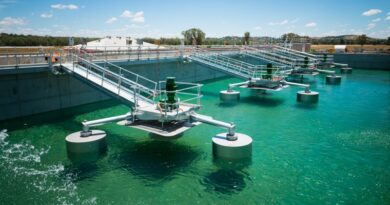Turning the tide: Integrating water sustainability into corporate plans
Simone Buffa

Water is a critical resource for businesses, influencing every aspect of operations, from production to supply chains. Yet, the increasing risks of water scarcity, pollution, and stringent regulations pose significant challenges.
Businesses today cannot afford to ignore these risks without compromising their continuity and reputation. However, by integrating sustainable water management into their corporate strategies, companies can safeguard their operations and build resilience, enhance their brand image, and meet the growing expectations of stakeholders. Here’s how businesses can approach this essential task.
Moreover, aligning with the United Nations Sustainable Development Goals (SDGs) such as SDG 6 (Clean Water and Sanitation), SDG 12 (Responsible Consumption and Production), and SDG 14 (Life Below Water), companies can contribute to global sustainability efforts. Here’s how businesses can approach this essential task.
Water-related risks and water footprints
In 2022, roughly half of the world’s population experienced severe water scarcity for at least part of the year, while one-quarter faced ‘extremely high’ levels of water stress. When businesses set up shop, they need to account for issues like this in their area. Not only to ensure that they don’t add to the increasing climate stress but also to ensure that business operations function smoothly.
For instance, lack of good water supply can disrupt operations and supply chains, leading to increased costs and decreased productivity; water pollution can damage both land and marine ecosystems and harm public health, resulting in stringent regulatory actions and fines; irresponsible water usage can also damage the reputation and lead to scarcity over time which again forms a vicious cycle of mismanagement.
If a business understands these risks upfront, it can take preventive measures to ensure these issues don’t crop up in the first place or have a protocol to deal with them if they do.
Similarly, businesses must also assess their water footprints across all operations, products, and supply chains. This helps identify hotspots and prioritize action areas. By understanding where water is used most intensively, companies can target their efforts more effectively and make informed decisions about where to invest in water-saving initiatives.
Sustainable water management
While assessment is one piece of the puzzle, the second is putting sustainable water management policies in place to ensure that operations can continue without interruption, secure the supply of water-dependent materials, and maintain a positive brand image. Moreover, it helps meet the growing expectations of stakeholders who demand responsible environmental practices from the companies they support.
- To effectively manage water resources, businesses need to set clear and measurable goals. This includes reducing water consumption, improving water quality, and minimizing water-related impacts. These goals should be integrated into the overall corporate strategy and aligned with broader sustainability objectives, such as those outlined by SDGs 6, 12, and 14, which emphasize clean water and sanitation, responsible consumption and production, and conservation and sustaining marine ecosystems respectively.
- At the same time, businesses need to implement water-efficient practices. Optimizing processes to reduce water use, adopting water-saving technologies, and implementing water reuse and recycling initiatives are effective strategies. For example, companies can invest in closed-loop systems that recycle water within their operations, significantly reducing overall water consumption. Such initiatives align with SDG 6, which aims to ensure the availability and sustainable management of water and sanitation for all.
- Engaging with stakeholders is the third essential component of successful water management initiatives. This includes fostering collaboration and gaining support from employees, suppliers, customers, communities, and regulators to enhance their water management efforts and drive collective action towards sustainable water use.
Mitigating risks and facing challenges
In the real world, despite taking effective measures to manage water as a resource, businesses still face risks and challenges. These can be mitigated through continuous monitoring of water management efforts, diversifying water sources, investing in infrastructure upgrades, and developing contingency plans for water scarcity events.
Tracking progress against goals and adapting strategies in response to changing conditions and emerging risks ensures that water management practices remain effective and relevant. Diversification reduces dependence on a single water source, while infrastructure upgrades ensure that systems are efficient and robust. Contingency plans prepare businesses to respond effectively to water shortages, minimizing operational disruptions.
In addition to this transparency with stakeholders and collaborative efforts are also key in mitigating water-related risks. Businesses should ideally be transparent about their water management practices and performance, including water-related risks and impacts. At the same time, they should make an effort to partner with other companies, government agencies, NGOs, and community organizations to drive collective action. Organizations like UN Water, the Alliance for Water Stewardship (AWS), and the World Business Council for Sustainable Development (WBCSD) are leading international efforts to promote water stewardship and sustainable water management practices. By working together, stakeholders can pool resources, share knowledge, and develop innovative solutions to complex water issues.
Taking a proactive stance and action is the only way to mitigate water-related risks and ensure smooth functioning for businesses heavily reliant on this resource. At a time when water-related problems are becoming increasingly common, companies need to stay on top of the game, making it a key part of their business strategies and operations. Sustainability is the only way forward.
(The author is Co-founder, The ImPart Collective)
(Disclaimer: India Water Review does not take any responsibility for the views expressed in the article. The article published also does not in anyway reflect the opinion of India Water Review.)



